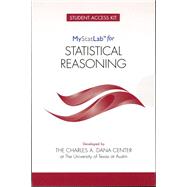The course is designed for providing statistics students with a deeper understanding of statistical concepts through hands-on and discovery-based learning.
MyStatLab for Statistical Reasoning is part of the series of MyMathLab/MyStatLab courses built to support the New Mathways Project developed by the Charles A. Dana Center. The New Mathways Project embodies the Dana Center’s vision for a systemic approach to improving student success and completion through implementation of processes, strategies, and structures built around three mathematics pathways and a supporting student success course.MyStatLab for Statistical Reasoning is the college-level course in the Statistics pathway for non-STEM students, designed with an active-learning approach that connects statistical concepts to hands-on and discovery-based activities for students. The MyStatLab course designed for use with Statistical Reasoning provides:
- Interactive content to help prepare students for active classroom time
- In-Class Interactive Lessons to support students through an active classroom experience, accompanied by notebook PDFs.
- Homework assignments designed to assess conceptual understanding of important skills and concepts.
- Additional resources for instructors to help facilitate an interactive and engaging classroom
Built in MyStatLab
Content developed by the Charles A. Dana Center at The University of Texas at Austin will be delivered through MyStatLab. MyStatLab is an online homework, tutorial, and assessment program that engages students and improves results. Within its structured environment, students practice what they learn, test their understanding, and pursue a personalized study plan that helps them absorb course material and understand difficult concepts.








